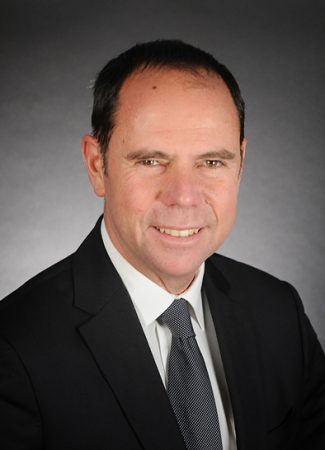On March 14th, Chancellor Angela Merkel was elected to a fourth term in office and will head a new grand coalition (Grosse Koalition – GroKo) between her conservative CDU/CSU alliance and the Social Democratic Party (SPD).
After four months of coalitions and negotiations, the new German government admits it will miss its 2020 climate targets but has nevertheless set some ambitious climate goals.
The provisions on climate, energy and transport under the new coalition treaty recognise the big challenges of Germany´s energy transition project but lack concrete instruments and measures. Unlike the renewables sector expansion, other areas, such as CO2 pricing, coal phase-out and electricity network expansion, lack concrete proposals, and must now be developed throughout the legislative period.
The new coalition government seems to know where the difficulties lie in Germany´s energy system, but they shy away from making important decisions. Long-term promises and vague commissions aim to disguise the fact that the coalition treaty lacks teeth.
Let´s now assess some of the major points of interest of the coalition treaty which directly affect the German electricity and gas sectors:
CLIMATE PROTECTION
Emissions
- Fully implement the Climate Action Programme 2020, as well as the Climate Action Plan 2050.
- National target of reducing emissions by 40% by 2020 compared to 1990 levels toned down to lowering emissions ‘as much as possible’.
- Internationally binding 2030 target of reducing emissions by 55% to be reached ‘by all means’.
- Law to be introduced in 2019 will make emissions reduction in specific areas and sectors legally binding.
Despite the increased levels of renewables production in 2017 (36.1% according to preliminary data), GHG emissions recorded disappointing levels: emissions of CO2 stagnated at the same level (approx. 27%) for the third year in a row instead of declining as envisioned. Whilst emissions in the electricity sector declined slightly, the most harmful source of CO2, lignite, remains at a consistently high level. If the new government does not react quickly, Germany will massively miss its 55% GHG reduction targets for 2030.With a Climate
Protection Law that, according to the coalition agreement, should be passed in 2019, Germany would finally create a legally binding framework. Such a law would explicitly enshrine comprehensive climate protection in German legislation and should be deemed as a positive development – so far, Germany has implemented individual measures and goals but has always failed to cast them into a law that cannot be easily undone by succeeding governments. Having said that, and although the idea of having a Climate Protection Act introduced sounds positive, its implementation will have no effect if it is not backed by the right tools needed to reach the climate goals.
Coal exit
- A special commission will be appointed on ‘growth, structural economic change and employment’, bringing together policymakers, industry representatives, environmental organisations, and labour unions, to draft an action programme by the end of 2018, which should include:
- measures to close the gap to the 2020 goal ‘as much as possible’, and to make the 2030 energy sector goal ‘credibly achievable’;
- a plan ‘for the gradual reduction and phase-out of coal-fired power production, including an end date, and the necessary accompanying legal, economic, social, and structural policy measures’;
- financial support for the necessary structural changes in affected regions.
- The commission´s findings will directly feed into laws for climate action.
The stagnation in Germany´s CO2 emissions in 2017 underlines what has been evident for so long: without a coal exit, Germany won´t make any progress in climate protection. The use of lignite plants, the most polluting power generation assets, should be throttled down immediately. At present, 25GW of coal generating capacity remains in operation in Germany and continues to account for a high share in the electricity mix (40%).
A social consensus on the future of coal-fired power generation is essential in order to make the energy transition a success and achieve the climate protection targets for 2020 and 2030. However, outsourcing the difficult task of phasing-out coal to a special commission may not be the best of ideas. This comes to show that the new coalition government is avoiding direct responsibility to protect the climate.
Setting a date in the course of 2018 for phasing out coal is as essential step for successful climate policy. However, it remains to be seen which date will be chosen. 2025 to 2030 would be compatible with the Paris Agreement, but no later unless measures to pursue the reduction of CO2 emissions are implemented in parallel – the EU ETS should make coal power unprofitable, but the price signal is too weak. Simply shutting down the 20 oldest coal-fired power plants by 2020 would close the gap to meet the German 2020 climate target by more than half. Several studies estimate that security of supply under this scenario would not be endangered despite the phase-out of nuclear power. Phasing out coal can be compensated by reducing exports and reviving underutilised gas-fired power plants (which emit only half as much CO2 per kWh but are more expensive to run), even in the case of additional adverse conditions (such as lack of sun and wind).
CO2 Price / ETS
- Strengthen the EU Emissions Trading System (ETS) as the ‘leading principle’ for CO2 pricing, and achieve a system that ‘is aimed at being effective globally but at least encompasses the G20 states’.
- Join forces with France for a ‘close cooperation’ towards implementing the Paris Climate Agreement and the commitments made at the 2017 One Planet Summit.
Although the long-term emission reduction targets are strengthened, the wording of the coalition treaty in this respect is rather weak, making just some reference to the Élysée Treaty. An additional carbon pricing will be required to reach the targets set. A carbon pricing that gives the right signals: encourage investments in climate-friendly assets, consistent with the Energy Transition, and disincentivize investments in economically unsustainable models. Hopefully, Germany will address this issue together with France when they next review the Élysée Treaty.
A recent study published by Agora Energiewende and Iddri pleads for a political agreement between France and Germany as far as power production is concerned:
- With the growth of renewable energy, both countries are facing common challenges regarding restructuring of their conventional power fleets.
- In France, the targeted development of renewable energy (40%) alongside the reinvestment in nuclear fleet greater than 50MW would pose a significant risk of stranded costs in the electricity sector.
- In Germany, achieving climate targets would require a reduction of its coal-fired power generation by 50%.
- The study concludes that France and Germany should rapidly define their national strategies regarding their nuclear and coal fleets, closely consult each other on cross-border consequences and initiate joint actions for the implementation of the Energy Transition, be it in the form of the development of renewables energy, interconnectors or CO2 pricing.
ENERGY
Renewables
- Continue with the ‘goal-oriented and efficient expansion of renewable energy sources that is synchronised with grid capacity and increasingly geared towards market mechanisms’.
- ‘Strive to achieve a share of 65% renewables by 2030’.
- Implement ‘special auctions’ to save up to 10 million Tn of CO2 by 2020: 4GW onshore wind power, 4GW solar power, as well as ‘one offshore wind power contribution’ to be split in equal amounts in 2019 and 2020, ‘provided that the grid´s carrying capacity is sufficient’.
Bearing in mind that a cap on the expansion of renewables was introduced in the last legislative period, this is good news. However, achieving a 65% renewable share by 2030, which would bring forward the current 2040 target by ten years, is highly ambitious. Although the required physical conditions are there, the treaty lacks details on how to adequately synchronise power grid capacity and renewables expansion.
Grid
- Compile an ‘ambitious plan containing measures to optimise existing grid infrastructure and accelerate expansion’.
- Improve cooperation between grid operators in order to make better use of the existing grids.
- Encourage the acceptance of grid expansion and accelerate construction by installing underground cables ‘at sensitive locations, if technically feasible’.
The energy transition poses an enormous challenge for the electricity transmission network – with renewables pushing in, a huge strain is put on the power grids.
To be able to transfer power generated in Germany´s windy north to industrial centres in the south over hundreds of kilometres, the planned HVDC SüdLink and SüdOstLink power transmission lines – scheduled for completion in 2025 – are part of Germany´s effort to overhaul its grid capacities to cope with the rising number of intermittent renewable energy sources. This would, in turn, prevent the system from shutting down wind turbines in periods of excess power production, and to avoid having to fall back on conventional plants because wind power cannot reach the south.
However, this planned network expansion does not come without difficulties:
- Transmission lines will be laid out by means of underground cables. Not only is this expensive and highly time consuming but will also face the opposition of environmental protesters and land owners, the latter ones fearing for the quality of their land, and who are already asking for recurring compensation rather than one-off payments as the grid operators will be constantly making profits with the management of the lines.
- In light of the above, grid costs, which account for roughly 25% of the electricity bill of German households, will be increased significantly.
- Should the grid not be expanded quickly enough, Germany would have to be divided again into electricity price zones. This has to do with the fact that the EU states have to gradually open their cross-border lines for electricity trading with neighbouring states. To avoid grid bottlenecks, they can choose to divide their electricity market into regions that would then have different electricity prices – or expand their networks. The Federal Government wants to avoid electricity price zones.
- Germany´s Federal Network Agency (BNetzA) says the preparations continue ‘according to plan’ but, if we take into account the arguments lined out above, completion by 2025 might turn out to be too optimistic a target.
Gas
- Make Germany a location for LNG infrastructure.
This certainly is a very positive development. At present, Germany needs to import about 93% of the gas it consumes (100% in the next decade as domestic gas fields are nearing depletion). Imports are made exclusively via pipeline, mostly from Russia, Norway and the Netherlands.
Plans have been in the works to install an LNG terminal in Germany for many years, but none have been realised. But, with the country shifting away from nuclear power, the future of coal in doubt and dwindling Dutch gas exports, Germany needs to look at alternative ways to diversify its natural gas imports – which will also reduce the dependency risk it is exposed to –, hence the refreshed interest in LNG fuelling.
In January 2018, after having received EU antitrust approval last year, an Open Season was launched by a Joint Venture between Gasunie, Oiltanking and Vopak to develop a midsize LNG terminal near Hamburg. Subject to the outcome of the Open Season, construction of Germany´s first LNG terminal is envisaged to start in 2019, to be ready for operations in Q4 2022.
After having analysed the new coalition treaty in terms of energy and climate protection, we could conclude that:
- Germany has now officially stepped down from its role an as international climate champion. Dropping the aim to reach the 2020 climate target undermines Germany´s integrity in this area and thus the basis of international climate policy, as enshrined in the Paris Agreement.
- Despite pursuing the adoption of a climate law, setting a deadline for coal phase-out and the faster deployment of renewable energy, the proposed package lacks concrete proposals on a CO2 price, on how to adequately synchronize renewable development and transmission network expansion, and on the remaining lifetime of coal plants, amongst others. This will certainly put the Energiewende at risk once again.
- Finally, if a country like Germany, whose outstanding role in the international climate diplomacy made the Paris Agreement possible, does not meet its long-established goals, who will? It is feared that other governments will drop their goals at the last minute with reference to the German ‘frontrunner’. The possible damage to the climate can therefore be significantly greater than the new coalition wants to admit. Therefore, and in light of the common challenges they face to achieve their Energy Transition goals, let´s hope that France and Germany will, sooner rather than later, reach an agreement on a series of energy and climate protection issues for other countries to follow suit.
Micaela Sternhagen







